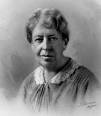| Date | Text | |
|---|---|---|
30 Mar 1863

Auguste Bravais |
death Auguste Bravais Died 30 Mar 1863 at age 51 (born 23 Aug 1811). French physicist and mineralogist, best remembered for his work on the lattice theory of crystals. Bravais lattices are named for him. In 1850, he showed that crystals could be divided into 14 unit cells for which: (a) the unit cell is the simplest repeating unit in the crystal; (b) opposite faces of a unit cell are parallel; and (c) the edge of the unit cell connects equivalent points. These unit cells fall into seven geometrical categories, which differ in their relative edge lengths and internal angles. In 1866, he elaborated the relationships between the ideal lattice and the material crystal. Sixty years later, Bravais' work provided the mathematical and conceptual basis for the determination of crystal structures after Laue's discovery of X-ray diffraction in 1911. |
|
30 Mar 1863

Mary Whiton Calkins |
birth Mary Whiton Calkins Born 30 Mar 1863; died 26 Feb 1930 at age 66. American educator and psychologist who was the first american woman to attain distinction in these fields of study. Calkins studied psychology at Harvard as a “guest,” since women could not officially register. After completing all requirements for a doctorate at Harvard, and with the strong support of William James and her other professors, Harvard still refused to grant a degree to a woman. She established the first psychology laboratory at a women's college (Wellesley). She developed the paired-associate procedure for studying verbal memories. One of her main findings was that repeated pairings of words increased memory. Calkins was interested in a wide variety of research topics, including perception, personality, emotion, and dreaming. |